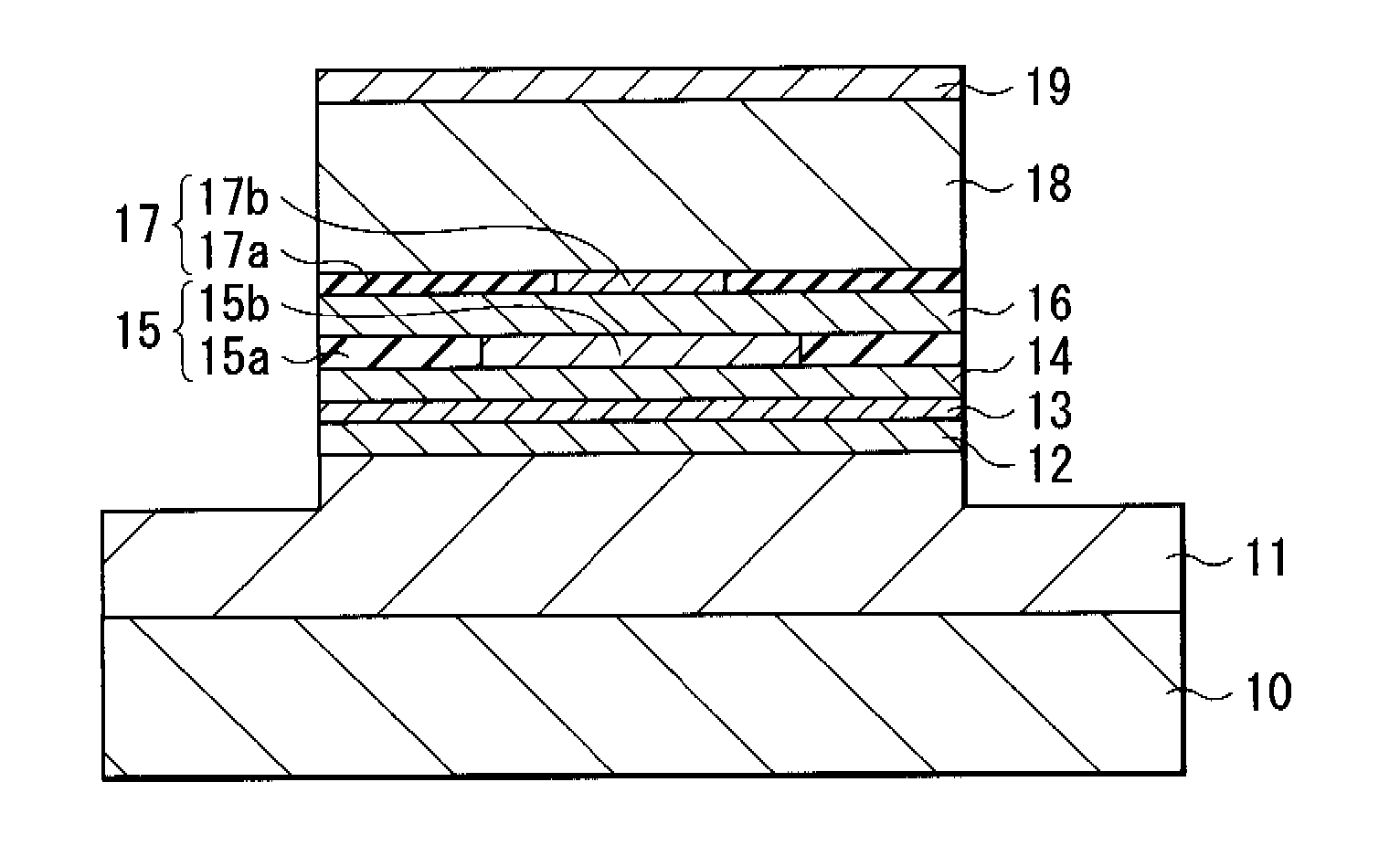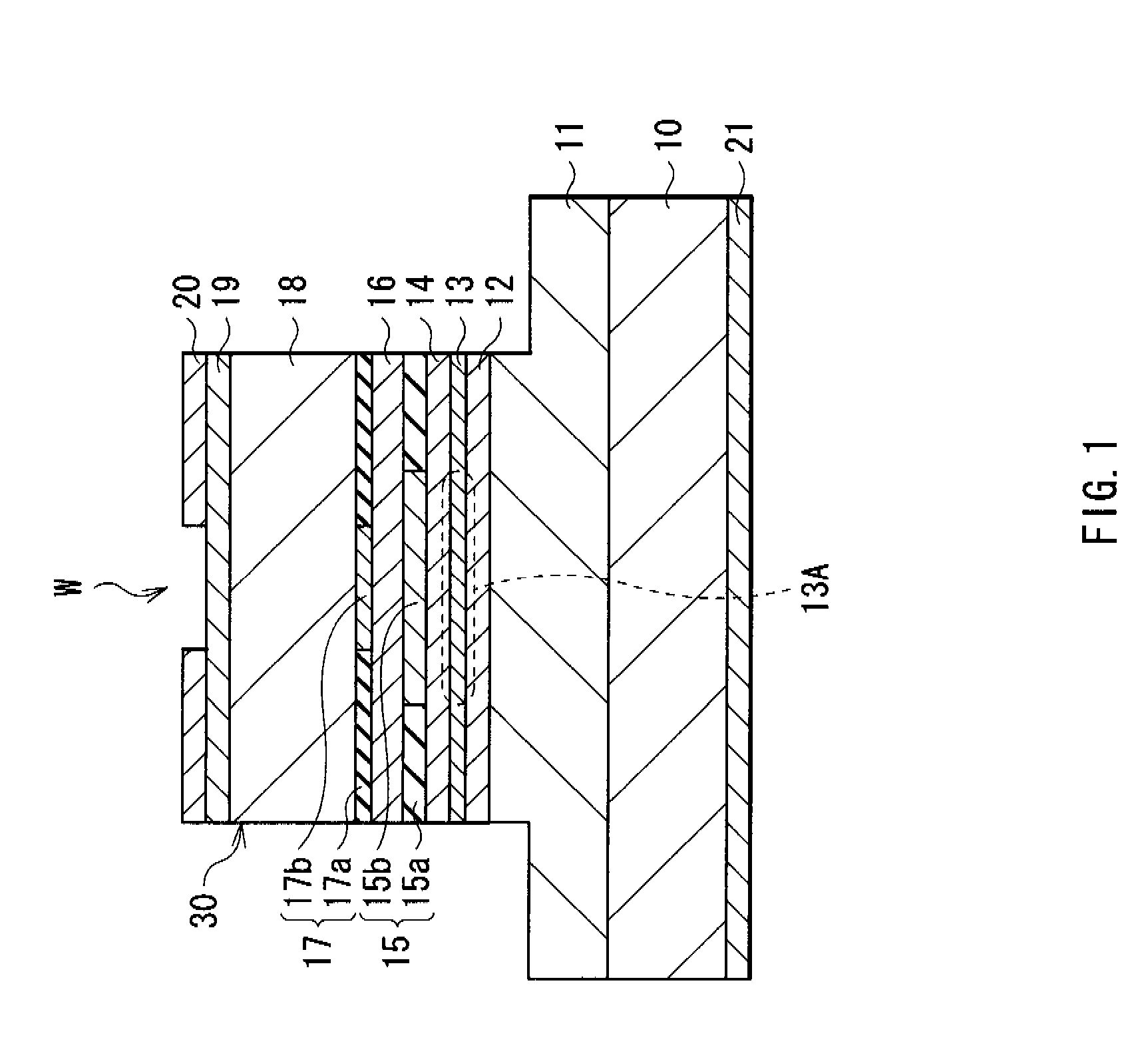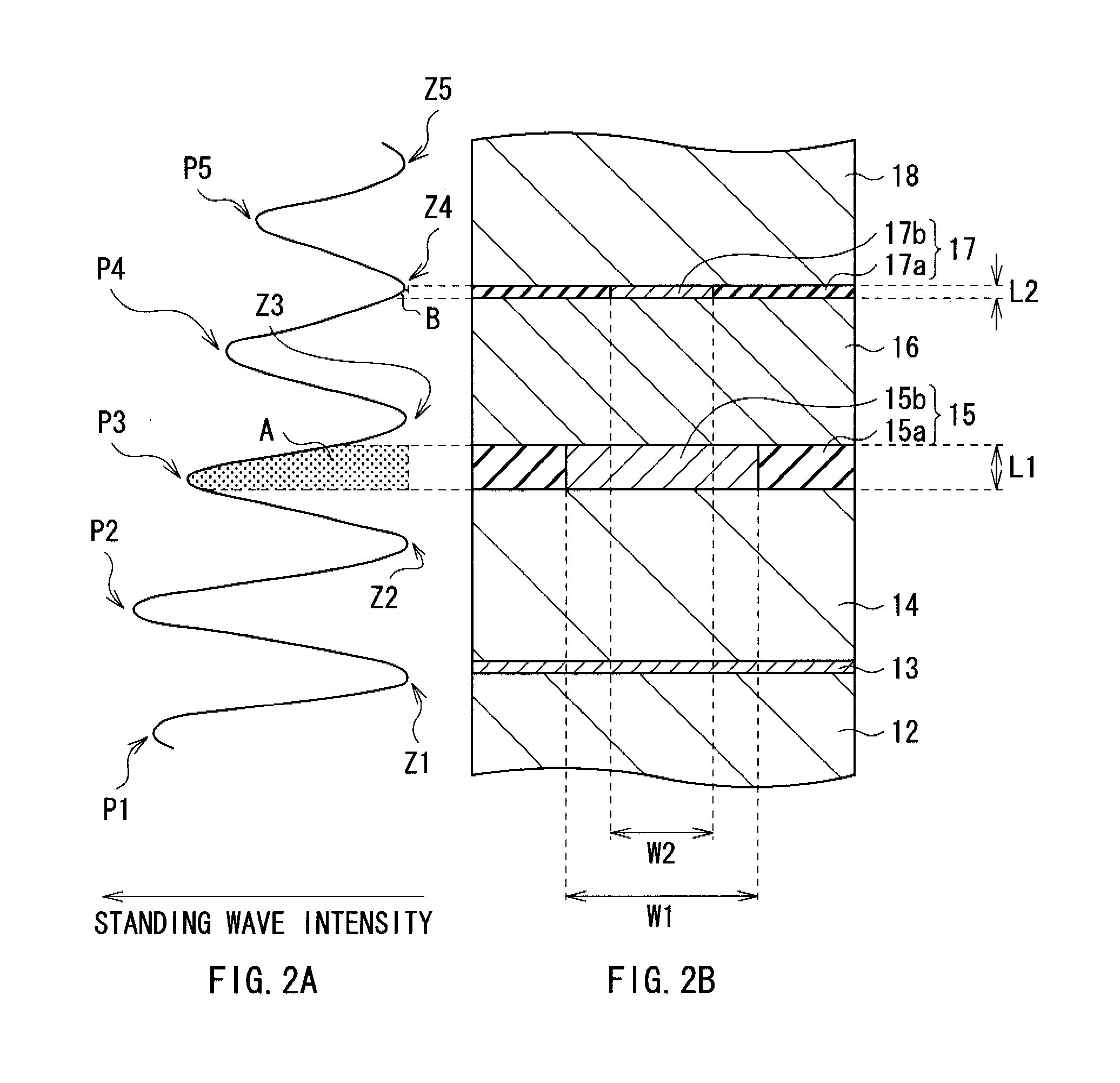[0013] In the VCSEL of the embodiment of the invention, the second current confinement layer with the thickness thinner than that of the first current confinement layer and with the
diameter of the second current injection region smaller than that of the first current injection region is provided at the node of the
standing wave. Therefore, in the second current confinement layer, a current is confined with giving no loss to light. Thereby, the diameter of the second current injection region can be decreased to the degree that the
current density becomes almost uniform over the whole area of the second current injection region. The second current confinement layer is provided in a position farther from the
active layer than the first current confinement layer. Therefore, when the diameter of the second current injection region is set to the size with which the
current density becomes almost uniform over the whole area of the second current injection region, the current confined by the second current confinement layer is not concentrated on the outer edge of the first current injection region of the first current confinement layer, and the current is concentrated on the central portion of the first current injection region. In the result, it becomes possible to intensively inject the current into the central portion of the region corresponding to the first current injection region in the active layer (central portion of the light emitting region). Meanwhile, the first current confinement layer with the thickness thicker than that of the second current confinement layer and with the diameter of the first current injection region larger than that of the second current injection region is provided at the antinode of the standing wave. Therefore, in the first current confinement layer, a loss is given to light in the transverse mode with the order having a large
gain in the portion corresponding to the outer edge of the first current injection region (outer edge of the light emitting region), and a loss is hardly given to light in the transverse mode with the order having a large
gain in the portion corresponding to the central portion of the first current injection region (central portion of the light emitting region).
[0014] According to the VCSEL of the embodiment of the invention, the first current confinement layer having the first current injection region with the large diameter and the second current confinement layer having the second current injection region with the small diameter are provided in this order from the active layer side. Therefore, a current can be intensively injected into the central portion of the light emitting region of the active layer. Thereby, compared to a case that the
current density is concentrated on the outer edge of the light emitting region, only oscillation in the high-order transverse mode having a large
gain in the outer edge in the light emitting region can be selectively suppressed. Since the thin second current confinement layer is provided at the node of the standing wave, a loss is hardly given to light regardless of the diameter size of the second current injection region, and oscillation in the basic lateral mode having a large gain in the central portion of the light emitting region is hardly blocked.
[0015] Further, as described above, the second current confinement layer has a function to confine a current. Therefore, it is possible to relatively freely set the diameter size of the first current injection region of the first current confinement layer provided at the antinode of the standing wave. When the diameter size of the first current injection region is appropriately adjusted, it is possible that a loss is hardly given to the light in the basic lateral mode having a large gain in the central portion of the light emitting region, and a loss is selectively given to only the light in the high-order lateral mode having a large gain in the outer edge of the light emitting region.
[0017] When the first current confinement layer has a thickness so that an integral value (area) of the standing wave intensity in the region corresponding to the first current confinement layer is 0.5 or more and smaller than 1.0 where an integral value (area) of the standing wave intensity in a region between two nodes located on the both sides of the antinode of the standing wave corresponding to the first current confinement layer is 1.0, a loss to the light in the basic lateral mode given from the first current confinement layer can be extremely small. Further, when the second current confinement layer has a thickness so that an integral value (area) the standing wave intensity in a region corresponding to the second current confinement layer is smaller than 0.1 where an integral value (area) of the standing wave intensity in a region between two nodes located on the both sides of the node of the standing wave corresponding to the second current confinement layer is 1.0, a light loss in the second current confinement layer can be extremely small. Thereby, it is possible to further improve the light output in the basic lateral mode while suppressing the oscillation in the high-order lateral mode.
 Login to View More
Login to View More  Login to View More
Login to View More 


